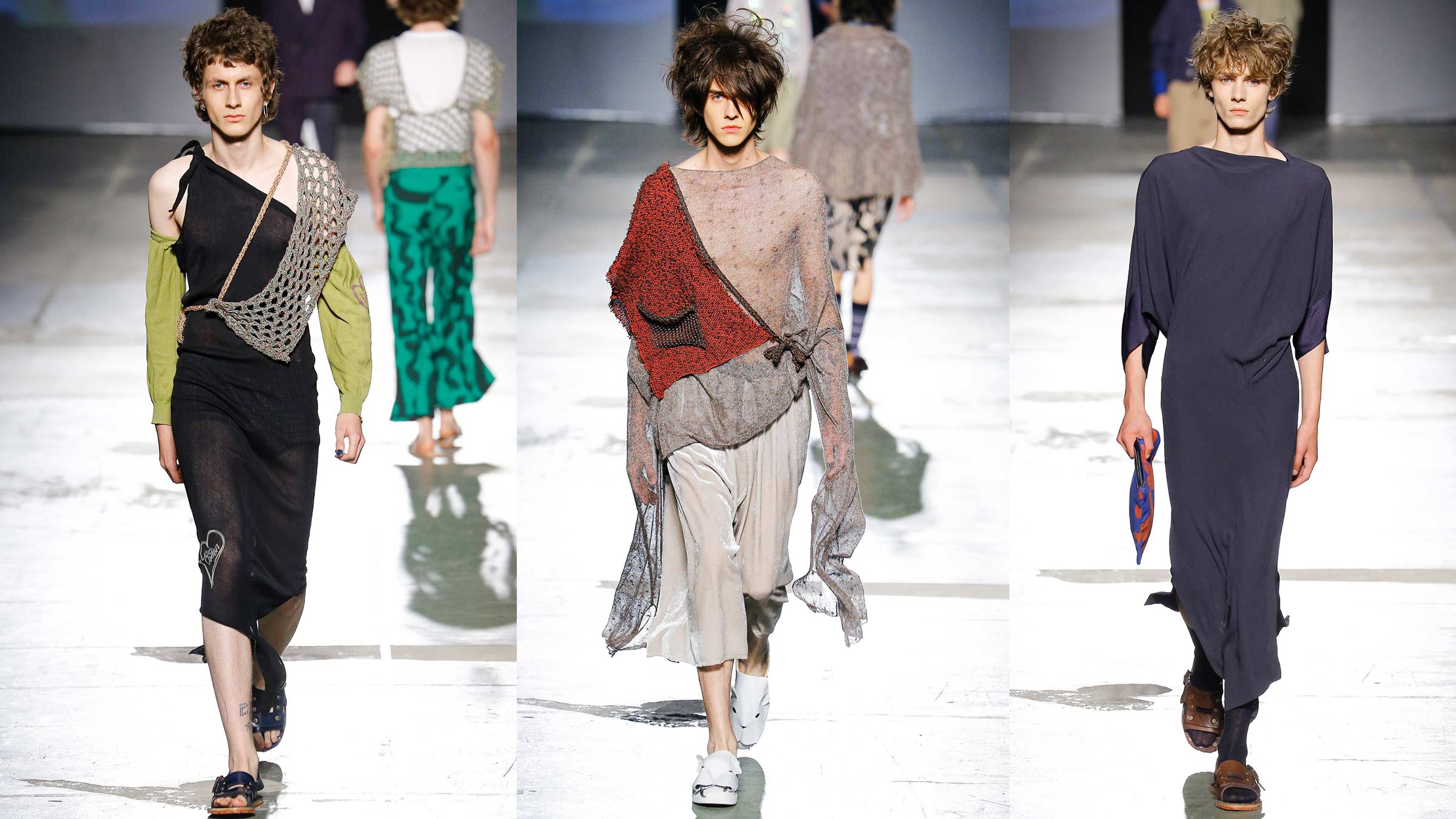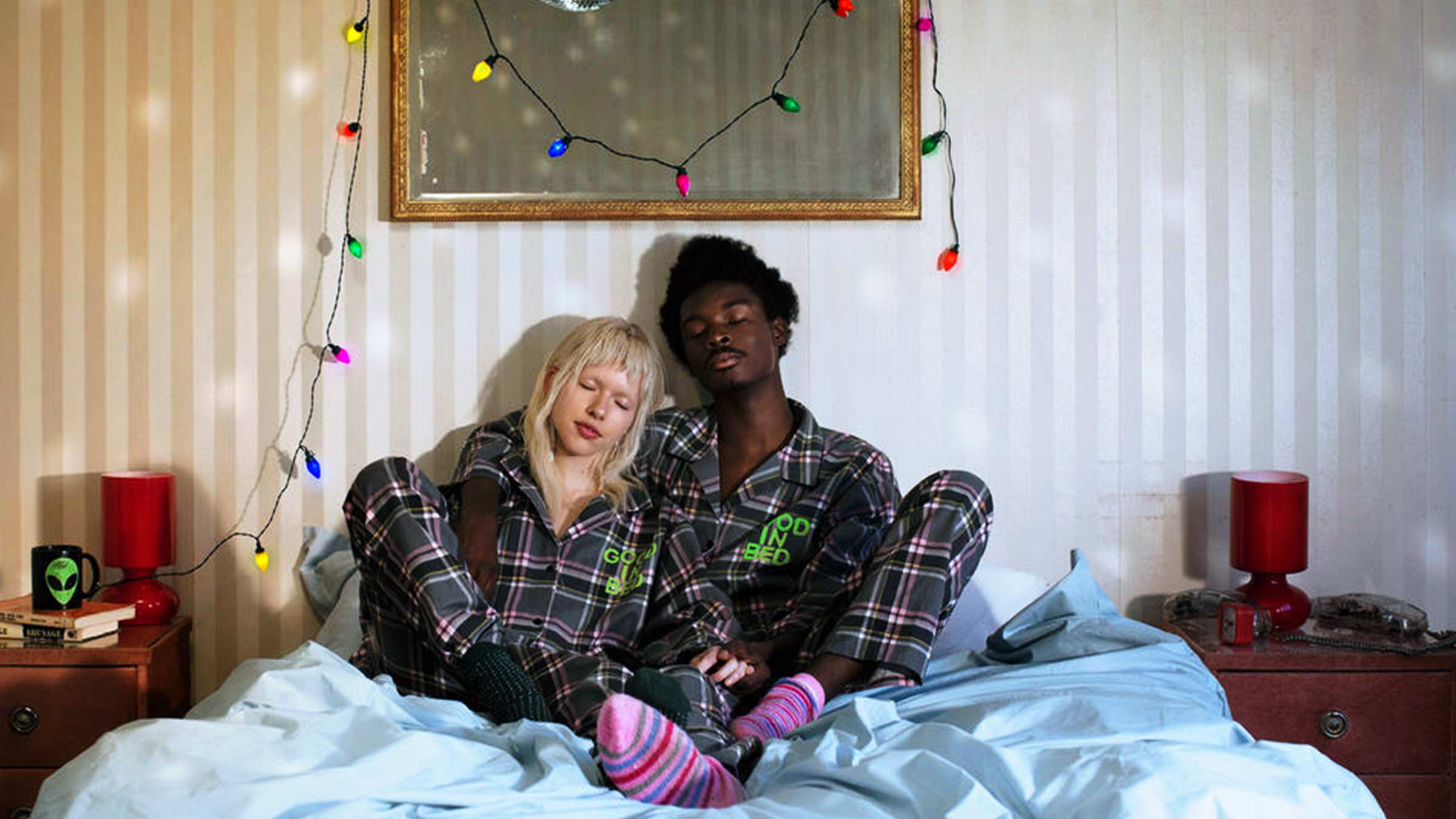The menswear fashion shows are all but over and once again, they are showing that the barriers between the genders are continuing to dissolve, and cultural identities are becoming much more fluid. A recent report on London Fashion Week Men’s from last month remarked that “skirts appeared almost everywhere”, with silk dresses at Vivienne Westwood’s menswear show and puff-sleeved gowns at Charles Jeffrey Loverboy.
For those of us who have followed the fashion scene for a long time, this trend is not surprising. Design talent doesn’t like to be put in a box, so increasingly the distinction between menswear and womenswear is becoming less important.
Who can ever forget and not be in awe of the career of Tom Ford, who revitalised Gucci in the 1990s by working seamlessly across its menswear and womenswear departments, adapting his style as needed. The first thing that he did when he got to Gucci where he had so little to work with, was to take the Gucci men’s loafer, put it on a female mannequin and the rest, as they say, is history. He continues to work across menswear and womenswear now at his own eponymous label. I also have it on good authority that around 40% of the men’s accessories at Louis Vuitton are bought by women.
In an era when traditional concepts of masculinity and femininity are changing, it makes sense that more and more companies would move towards gender neutral fashion. During the last fashion season a host of brands including Burberry, Tom Ford, Gucci, Calvin Klein and Paul Smith decided to present one collection at their catwalk shows by merging menswear and womenswear.
“It seems only natural to me to present my men’s and women’s collections together. It’s the way I see the world. I believe it will give me the chance to move towards a different kind of approach to my storytelling.” Alessandro Michele, creative director, Gucci
Many retailers have taken steps to meet this demand for a unisex approach. In 2015 Selfridges launched Agender, where the strapline was “Welcome to the future of genderless shopping”. This was a new concept that saw the department store create a gender-neutral space, across fashion, accessories and beauty, transcending notions of his and hers with exclusive designs, beauty products and accessories. For the launch, Selfridges removed mannequins from its windows and put on display five new unisex collections, while also highlighting “agender” items from existing brands.
The idea is filtering down from the luxury world to everyday fashion, too. Earlier this year H&M launched a new unisex line called Denim United which included a denim dress marketed as being for all gender identities. Not long after River Island announced a new partnership with designer Ashish Gupta to create a gender neutral collection across loungewear, outerwear and dresses (pictured below). Inditex-owned Zara unveiled its first ‘ungendered’ clothing line last year.
Gender dynamics have always influenced fashion, but brands are also under pressure to ensure they are as open and diverse as possible – particularly as transgender awareness rises across all areas of public life. The charity Educate & Celebrate reported in May that around 120 schools now have a gender neutral school uniform policy in place, whereby both boys and girls are allowed to wear either skirts or trousers, or there is a unisex uniform for all. This correlates with a rapid rise in the number of children identifying as transgender in recent years.
At the same time, social media has created an influencer culture in which young people do not necessarily identify along the same gender lines as previous generations. Last year actor and model Jaden Smith appeared in a leather kilt for a womenswear advertising campaign for Louis Vuitton, and Smith has also posted an image of himself wearing a skirt on Instagram. Influencers like Smith, and many of their social media following, are relaxed about how they express their gender identity.
All of these factors present opportunities for brands that are inventive, adventurous and that are willing to listen carefully to their customers and staff when it comes to diversity. We at The MBS Group strive for diversity in every placement process we undertake, as we believe it results in the most dynamic, successful businesses.
As H&M said when it launched its gender neutral collection: “Fashion should always be inclusive.” It will certainly be fascinating to see how the trend evolves in the months and years ahead.









